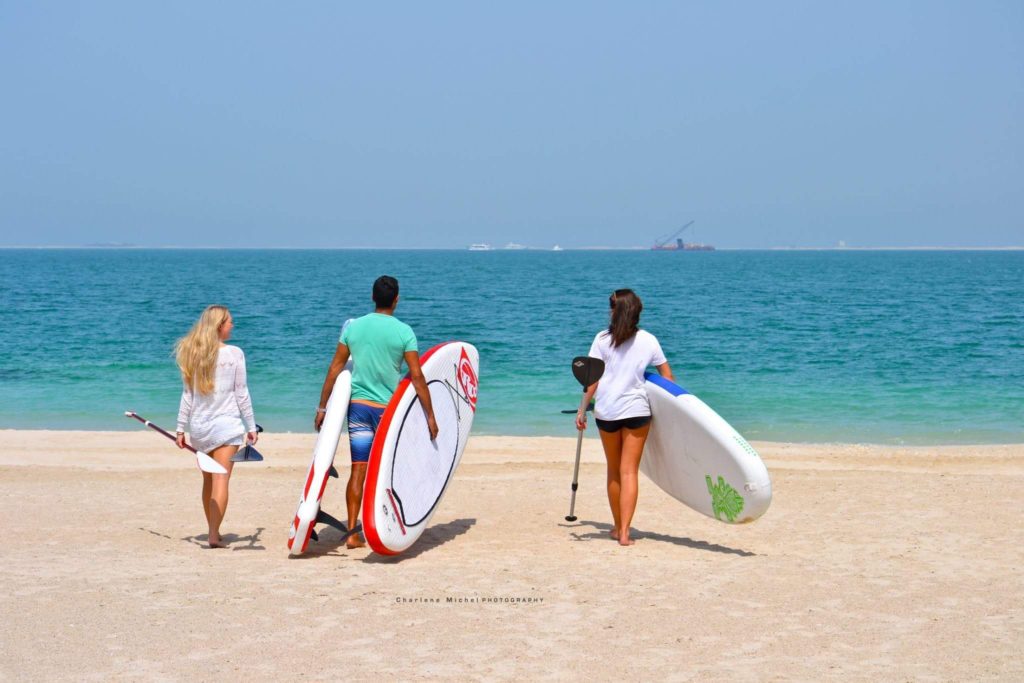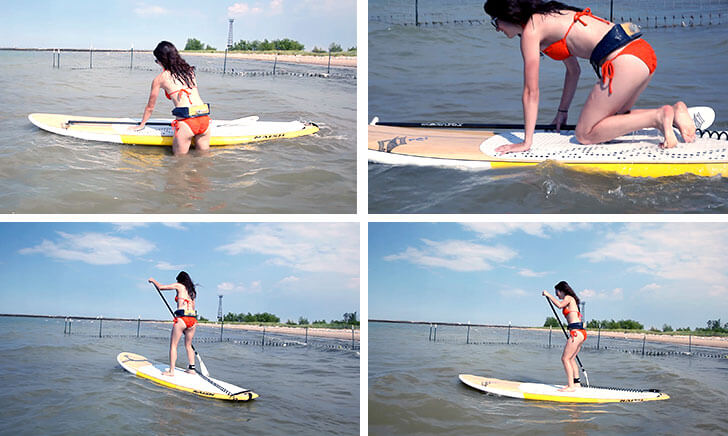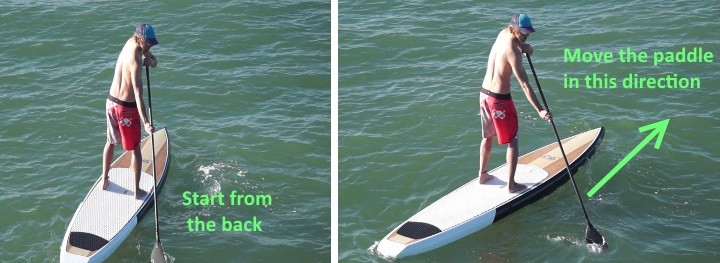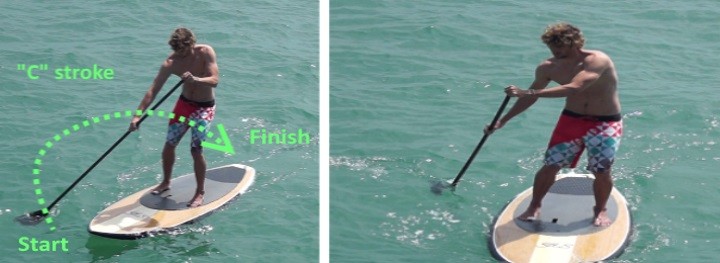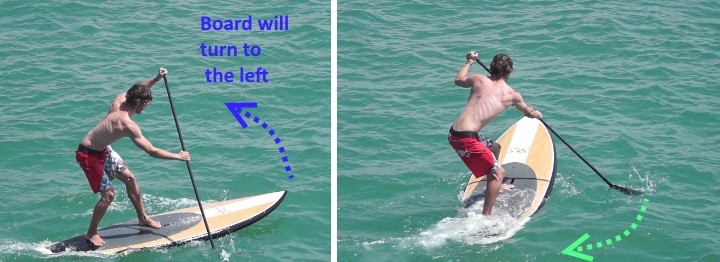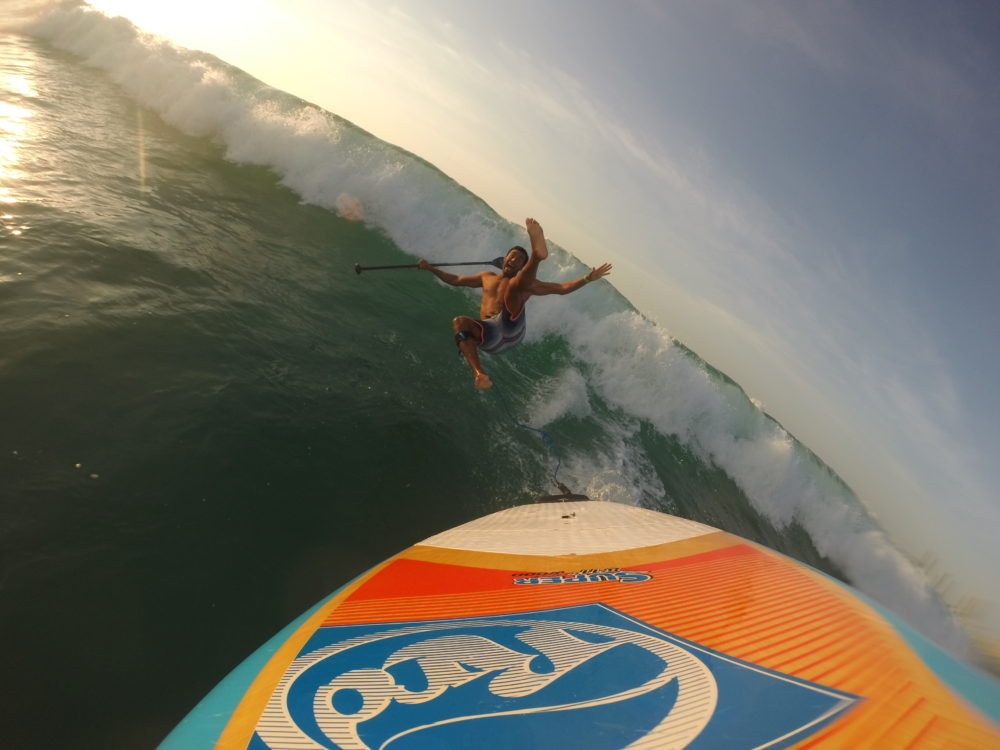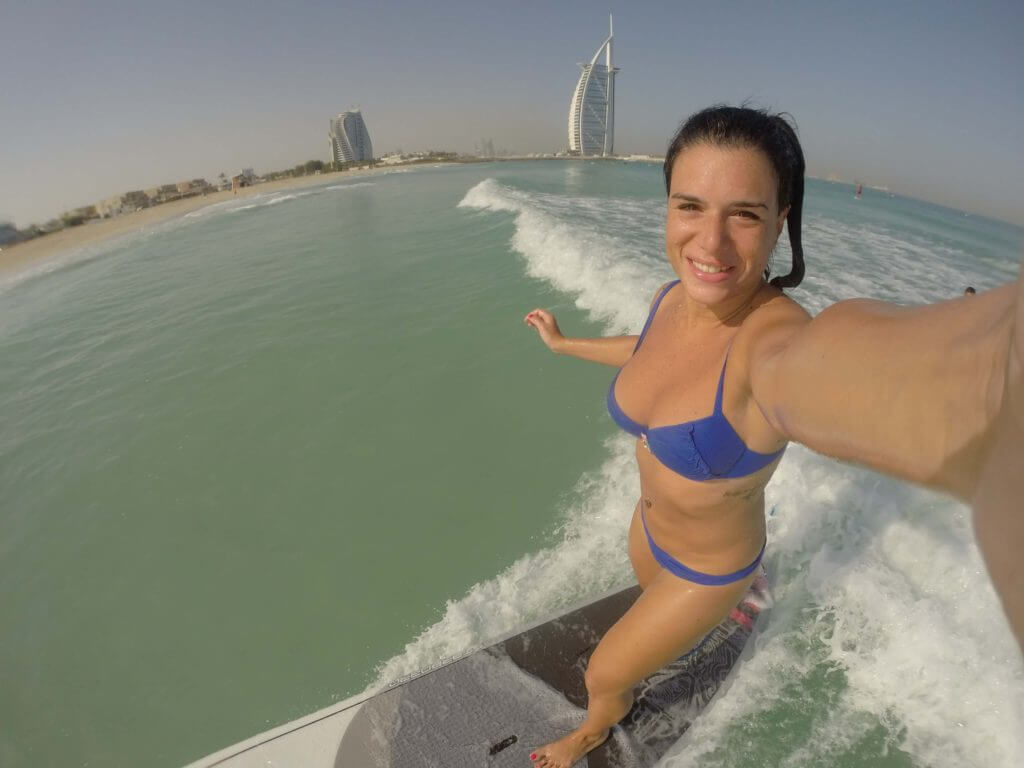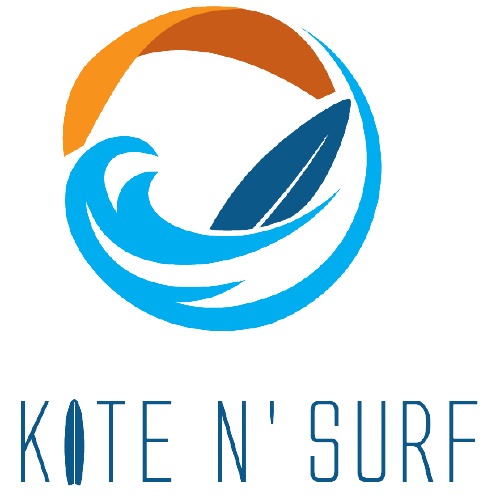SUP LESSONS IN DUBAI
Kite N Surf Dubai offers SUP lessons in the prime locations of Nessnass Kite beach and in Palm Jumeirah – away from the wind and choppy water to make sure you enjoy your time fully and achieve the goal of standing up and paddling!
Our instructors have spent years learning the fine art of SUP Lessons (Stand Up Paddleboarding lessons) just to teach you Stand up paddling here in Dubai!
The 60 minute SUP Lesson goes over basic water safety, weather assessment, self-rescue, how to launch, how to stand on the board, proper stroke form, and all the necessary techniques in between.
By the end, you’ll be surfing up and down Dubai coasts!
SUP LESSONS BASICS
One of the great things about stand-up paddling is that pretty much anyone, within a few minutes, can be standing up on a board and “making it go”.
If you are brand new to stand-up paddling or have never taken any formal instruction, our SUP lessons Basics course is for you! Our Stand Up Paddleboarding 1 hour session gets you started off right with essential info on gear and clothing, safety knowledge, and equipment care.
You will leave with the basic paddling skills and knowledge to safely stand up paddle on sheltered and enclosed waters, and ready to paddle your way into the ocean!
IS ‘SUP LESSONS’ THE COURSE FOR YOU?
The SUP lessons Basics are intended for those of you who want to try stand-up paddling for the first time, for those who have been self-taught, or for those who have perhaps been introduced to SUP by friends or family but have not had any formal paddling instruction.
Many first-timers are nervous, anticipating that maintaining balance will be difficult, or are afraid of falling in. But the truth is most people don’t fall in and few have issues with balance after the first few minutes. If you can ride a bike or ski, you can paddle aboard!
Total SUP lessons, Stand Up Paddleboarding lessons basics class duration is 1 Hour in a group of 5-10 persons every Tuesday/Friday/Saturday 8:00 am
HOW MUCH DO SUP LESSONS COST?
| SUP Lessons | Time | Cost | Book |
|---|---|---|---|
| Express SUP lesson (20 minutes lesson + 40 minutes sup rental) | 1 hour | AED 125 | BOOK |
| Single private SUP lesson | 1 hour | AED 250 | BOOK |
| Single private SUP lesson | 3 hours | AED 600 | BOOK |
| Couple of private SUP lessons (2 people) | 1 hour | AED 200 x person | BOOK |
| Group private SUP lesson (3 or more people) | 1 hour | AED 150 x person | BOOK |
| Couple private SUP lessons (20 min. with instructor + 40 min rental) | 1 hour | AED 100 x person | BOOK |
SUP LESSONS BREAKDOWN
Your paddleboard is designed with a built-in handle, making carrying it a breeze. Just lean the board on its rail (edge), reach for the handle, and tuck the board under one arm. Carry your paddle with the other hand.
For longer distances, or if your board has no handle, you can more easily carry your paddleboard on your head.
Here’s how:
- Stand the board on its tail (end) with the deck (top of the board) facing you.
- Lay your paddle on the ground within easy reach.
- Grasp the rails (the edges of the board) with both hands.
- Walk yourself under the board so that your head is about midway between the nose (front) and the tail.
- Stand upright with the board overhead, still holding it by its rails.
- Now bend down and pick up your paddle and carry it alongside the board.
- Head for the water.
SUP LESSONS ON CALM WATER
When you’re learning PADDLE BOARDING, it’s best to start out in flat, calm water that’s free of obstacles like boats and buoys.
It’s easier to kneel on the board rather than to stand directly upright. Here are a few pointers to get you started:
- Standing alongside the board, place your paddle across the deck of the board and use it as an outrigger. The paddle grip is on the rail (edge) of the board; the blade rests on the water.
- Hold the board by the rails. One hand will also be holding the paddle grip.
- Pop yourself onto the board into a kneeling position, just behind the center point of the board.
- From that kneeling position, get a feel for the balance point of the board. The nose shouldn’t pop up out of the water and the tail shouldn’t dig in.
- Keep your hands on either side of the board to stabilize it.
Once you’re ready, stand up on the board one foot at a time. Place your feet where your knees were.
PADDLEBOARDING STANCE SUP LESSONS
A few tips to help you keep your balance as you stand upright on the paddleboard:
- Your feet should be parallel, about hip-width distance apart, centered between the rails (board edges). Don’t stand on the rails.
- Keep toes pointed forward, knees bent and your back straight.
- Balance with your hips—not your head.
- Keep your head and shoulders steady and upright, and shift your weight by moving your hips.
- Your gaze should be level at the horizon. Avoid the temptation to stare at your feet.
Once you’ve practiced balancing on the board in flat water, it’s time to take off on a paddleboarding excursion—where the real fun begins. Here are some pointers for getting started with the basic paddleboarding stroke.
- If you’re paddling on the right, your right hand is lower and on the paddle shaft. Your top (left) hand is on the top of the grip.
- The elbow (angle) of the paddle faces away from you.
- Keep your arms straight and twist from your torso as you paddle. Think of using your torso to paddle rather than your arms. You have more strength in those abdominal muscles than in your arms.
- Push down on the paddle grip with your top hand.
- Plant the paddle by pushing the blade all the way under the surface, pulling it back to your ankle, then out of the water.
- When you’re beginning, keep your strokes fairly short and close alongside the board. No need to overpower it.
- A small draw stroke at the beginning of the paddle stroke will keep you going forward.
- To go in a reasonably straight line, paddle about 4 or 5 strokes on one side, then switch to the other.
- When you switch sides, you’ll reverse hand positions.
PADDLEBOARDING TURNS SUP LESSONS
There are several straightforward ways to turn a paddleboard.
Sidestroke: One easy method is simply to paddle on one side until the nose turns in the direction you want to go. Want to turn right? Paddle on the left. Headed to the left? Paddle on the right.
Backpaddle: Another fast way to turn or reverse direction is to simply drag the paddle or paddle backward on either side of the board.
Sea “c” stroke: Plant your paddle towards the front of the board and take a long sweeping stroke towards the tail. This is sometimes called a sweep stroke.
Other tips: Stepping back on the board or looking over your shoulder in the direction of your turn also helps in making a turn.
Another turn that works well, especially in surf, is to paddle on your dominant side (left foot forward, paddle on your right side). Really bend your knees and put more weight on your back foot. This allows the board to pivot and turns quickly.
SUP LESSONS WHEN YOU FALL
Stand-up paddleboarding is relatively easy to learn, but expect to take the occasional fall as you’re gaining skills. Here are some tips for those inevitable times you lose your balance: Aim yourself to the side so that you fall into the water and not onto the board. Falling onto the board is more likely to cause an injury. If you get separated from your paddle and your board, get your board first, then paddle it like a surfboard to retrieve the paddle.
COMMON BEGINNER’S MISTAKES IN STAND UP PADDLING
These mistakes are easy to make when you’re starting out. Try to avoid them and you’ll have a lot more fun on the water:
- A hunched posture. Keep your back straight, shoulders level.
- Staring at your feet instead of the horizon.
- The elbow (bent angle) of the paddle facing in the wrong direction. It should point away from you.
- Having both hands on the paddle shaft. Your top hand belongs at the very top of the paddle, on the grip.
- Standing straight-kneed. It’s much easier to balance with bent knees.
STAND UP PADDLING in Dubai NEXT STEPS
Once you’ve mastered the basics, there’s almost no limit to the watery worlds you can explore on your stand-up paddleboard. Play in the waves and ocean surf, carve turns, or learn new strokes. You might find yourself wanting a narrower, more maneuverable board as you become more adept. Meanwhile, get out there, enjoy the view and have a great time on your SUP!

